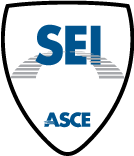For young professionals, engaging with the Structural Engineering Institute (SEI) opens a wide range of opportunities to grow in both their careers and the structural engineering profession as a whole. Whether you're interested in the private sector, public sector, or academia, SEI offers pathways to contribute to advancing the field. From shaping industry standards to advocating for critical initiatives like sustainability and diversity, young engineers have numerous avenues to influence the future of structural engineering while building valuable leadership skills.
Omar Amini, Ph.D., P.E., Chair of the SEI Young Professionals Committee, passionately articulates this vision: “The SEI Young Professionals Committee serves as an incubator for the next generation of SEI leaders and engineers. We provide a platform for networking, mentorship, and professional development.” Established in 2011, this committee empowers young engineers to connect, learn, and rise together. The SEI Board of Governors has identified young professionals as a group the board will focus on and has recently approved the committee’s 3-year charter for growth. Looking ahead, the committee aims to launch pilot programs with virtual information sessions, social events, and technical training—building an even stronger community of professionals ready to make their mark.
For students and recent graduates, SEI acts as a launching pad. Amini emphasizes that involvement can start by participating in university ASCE Student Chapters and, upon graduation, transitioning seamlessly into local SEI chapters or the Young Professionals Committee. “Involvement doesn’t have to be a massive commitment; it’s about being consistent and engaged,” he notes, underscoring how this steady involvement builds powerful networks and valuable experiences that propel careers forward.
For young professionals in academia, SEI involvement can bridge the gap between industry knowledge and education. Experienced engineers like Girum Urgessa, Ph.D., P.E., F.SEI, F. ASCE, who began in the private sector before transitioning to academia, exemplify how engaging in SEI committees like Diversity, Equity, and Inclusion (DEI) enables academics to influence the profession’s future while enhancing educational practices. This participation creates a unique avenue for academic-minded young professionals to impact structural engineering beyond the classroom.
In the private sector, opportunities are just as impactful. By joining SEI committees, young engineers can contribute to groundbreaking projects that redefine the industry. Collaborating with experienced professionals on initiatives such as performance-based design, seismic retrofitting, and sustainable construction practices ensures that tomorrow’s structures are not only resilient but also innovative.
Ultimately, SEI equips young professionals with the tools and pathways to thrive across sectors. By becoming active members of committees like the Young Professionals Committee, attending workshops, and contributing to DEI and sustainability initiatives, they can make a lasting impact on the profession while advancing their careers. As Amini captures so well, “The SEI Young Professionals Committee is a vibrant, supportive space where early-career professionals can thrive.” Joining this movement allows passion for structural engineering to shine, helping lead the profession into the future.


